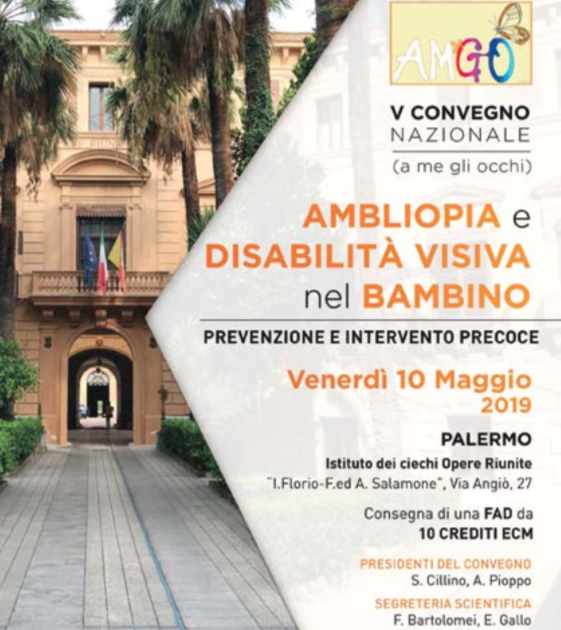The 5th Edition of the AMGO (a me gli occhi [these eyes are mine]) National Convention was held in Palermo. The conference is part of the project of the same name by the Institute for the blind F. Cavazza now widespread throughout the country thanks to the synergy with the Italian Union of the Blind and Partially Sighted and to the support of numerous partners. The participation of professionals from all over Italy was again impressive on this traditional day of training and discussions on the subject of amblyopia and visual disability prevention in children.

The outcomes of the event, held on Friday, May 10th in the splendid venue of the Blind Institute of Palermo Florio Salamone, are quite positive. Well-known members of the paediatric ophthalmology sector were in attendance providing an opportunity to discuss the effectiveness of visual prevention initiatives and the cutting-edge techniques applicable today. The contribution of Dr. Robert Arnold of the Alaska Children's Eye and Strabismus was of particular interest. The eminent American doctor talked about his experience relating to the development of the screening program Alaska Blind Child Discovery, and shared the results of the studies he conducted overseas.
In recent months, many children have been able to take advantage of free orthoptic and ophthalmological assessments provided by the orthoptists and ophthalmologists who have joined the project (it is possible to read information on the project and stay updated on future events on the website www.amgo.it). Amblyopia, also known as “lazy eye” can be corrected only if it is diagnosed and treated early. However, there is still not sufficient knowledge of the problem on the part of families. The results from a survey aimed at young parents indicated that around 50% of respondents do not know the meaning of amblyopia; while 30% believe that it is a problem that can be solved even in adulthood. Initiatives such as the AMGO project, which contribute to spreading a culture of prevention, gain in effectiveness as awareness increases throughout the territory, directly reaching the people concerned.
For this reason, the Institute's commitment will be to further strengthen these efforts as we go forward, which until now has led to significant results.




.png)